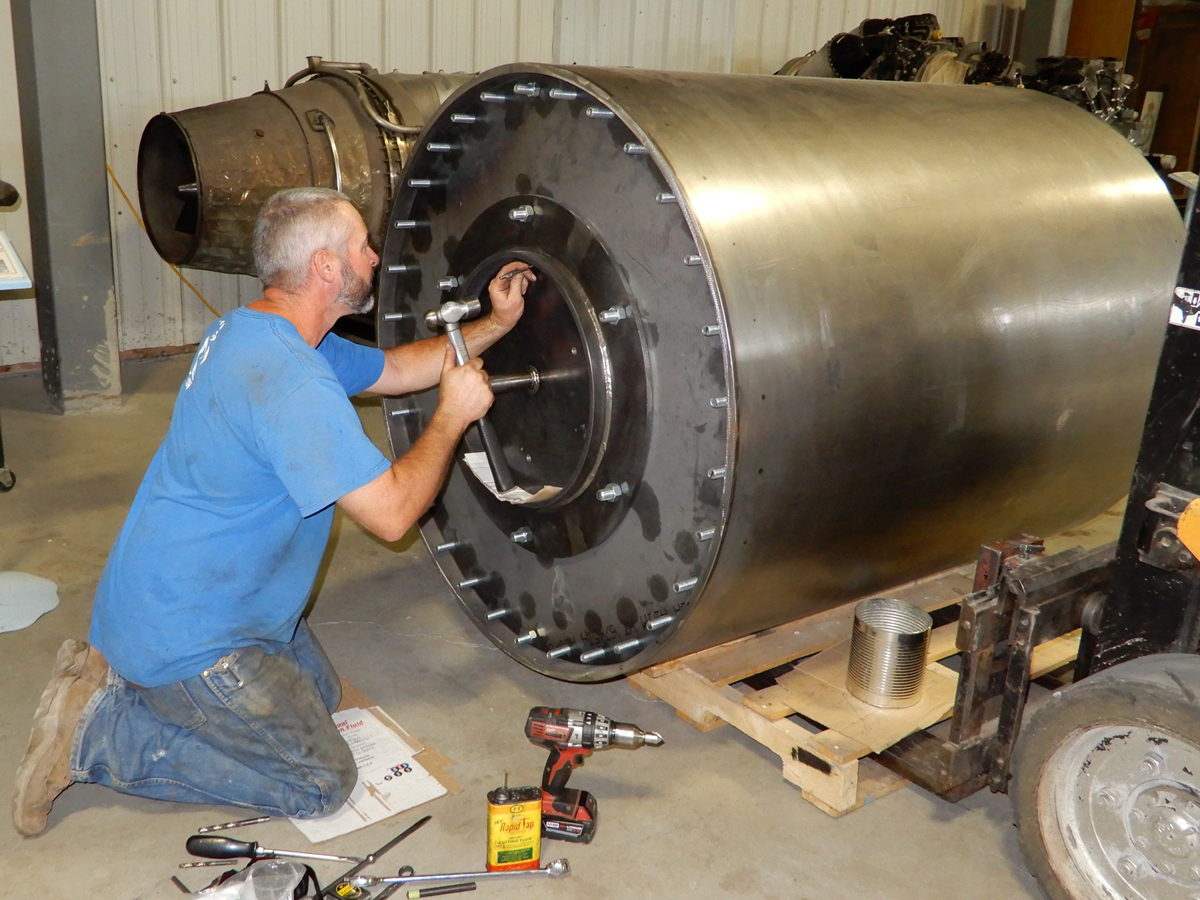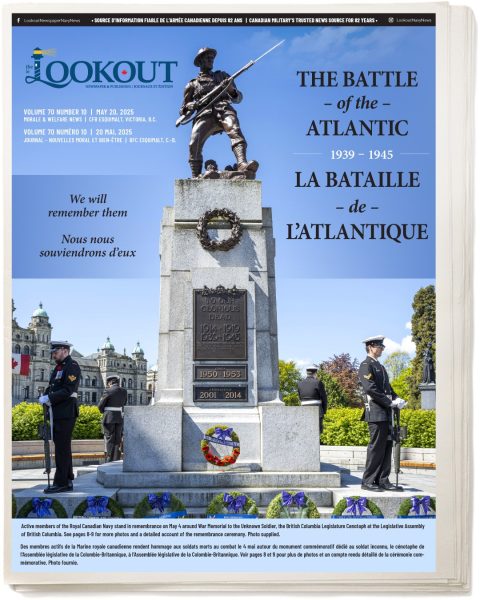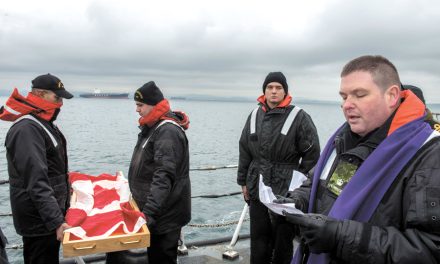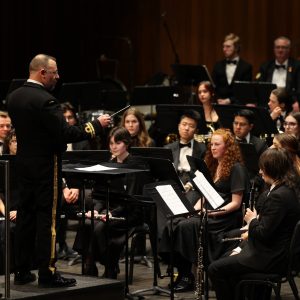
Multi-talented craftsman volunteer, Ben Schwartz, puts the finishing touches to the bouncing bomb replica at the Bomber Command Museum of Canada in Nanton, Alberta. Schwartz also designed and built the mounts for the bomb on the museum’s Lancaster. Photo by John Chalmers
John Chalmers, Canada’s Aviation Hall of Fame ~
“We have the only Lancaster in the world equipped with a bouncing bomb,” said Dan Fox, vice-president of the Nanton Lancaster Society, which operates the Bomber Command Museum of Canada, at Nanton, Alberta.
Fox was referring to the museum’s replica bouncing bomb, or “Upkeep” as the original was called—the type carried by Lancaster bombers of Royal Air Force 617 Squadron in the famous Dambusters raids of May 1943.
The special bombs were spun backwards before being dropped at very low level. They then bounced across the water and sank against the wall of the dams that were attacked in Germany’s Ruhr Valley on May 16-17, 1943. Once they had settled to a specific depth, they exploded against the dam walls.
Designed by museum volunteer and board member, Ben Schwartz, the replica bomb was built by Tecumseh Industries Ltd. in the nearby town of High River, Alberta. Weighing 960 pounds (435 kilograms), the bomb was built for the museum’s commemoration of the 75th anniversary of the Dambusters raid.
The cost of the bomb was supported by Shere Fraser and her mother, Doris Fraser, the widow of Canadian bomb aimer Flight Sergeant John Fraser, who flew with 617 Squadron in the Dambusters raid. His aircraft was shot down, but Flight Sergeant Fraser was able to bail out and was captured as a prisoner of war.
On Aug. 24-25, 2018, at the Bomber Command Museum, special events were held to honour Canadians who flew with the Royal Air Force on the famous bombing raid.
Of 133 air crew members who served in the Dambusters raid, 30 were Canadians. Of the 53 airmen killed in action in the raid, 14 were Canadians in the Royal Canadian Air Force (RCAF).
The museum’s Lancaster, FM159, known as the Bazalgette Lancaster, honours Squadron Leader Ian Bazalgette of Calgary, Alberta. He was Calgary’s only recipient of the Victoria Cross in the Second World War. He received the award posthumously, as he was killed in action as a pilot of a Lancaster. However, during 2018, the museum’s Lancaster bears the markings of AJ-M, one of 617 Squadron’s Lancasters on which Canadians flew in “Operation Chastise” to attack the river dams.
In attendance over the August weekend were 40 members of 15 families of RCAF aircrew who flew with 617 Squadron. Among them were 14 members of the family of the late Air Commodore Johnny Fauquier, who took a reduction in rank to group captain to carry out operations and serve as commanding officer of 617 Squadron after the Dambusters raid. Air Commodore Fauquier flew at least 93 combat missions, was awarded the Distinguished Flying Cross, and three times received the Distinguished Service Order.
A highlight of special events at the museum is always a daytime and night run-up of the Lancaster’s four Merlin V-12 engines. This year, just as was done 75 years ago, the mighty Lancaster had a unique bouncing bomb spinning beneath its belly. With the “Upkeep” bouncing bomb in place, the Lancaster of the Bomber Command Museum of Canada brought to mind the night bombing runs of Canadians during the Second World War.
John Chalmers is historian for Canada’s Aviation Hall of Fame and membership secretary for the Canadian Aviation Historical Society.











